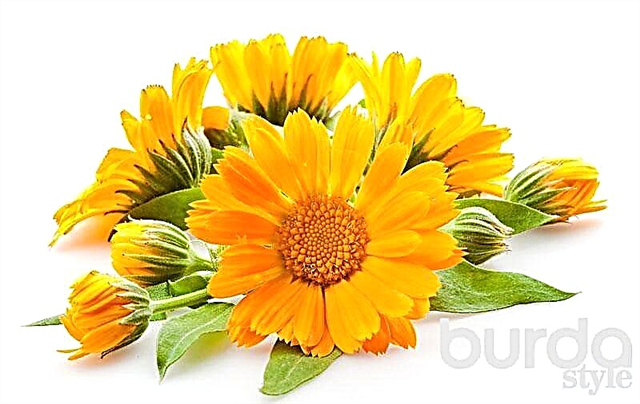Do you think the view can only be from the window? And no! Walls are a wonderful canvas for the embodiment of creative design.
ART NOUVEAU
Make magical flowering branches from old magazines. Cut the pages into strips, fold them in a loop and lay them in a motif, glue and fix them on the wall in the form of an ornament (for example, like ours - in the form of a flowering branch).
See also our quilling workshop.
WHAT YOU NEED: pages from old magazines, if possible with color illustrations; roller knife cutter; litter for cutting; ruler; glue; paper clips, small cloves, a hammer.
HOW TO MAKE: cut the pages of the magazines into strips 3 cm wide. Cut part of the strips in half, cut off a third of the part. Then lay the strips with eyelets and glue the short ends with glue. The glued ends are fixed with paper clips. The paper loops should dry completely, only then can the staples be removed.
The loops are folded into motifs (then they can be hung in the form of a branch, as shown in the photo of the model), while the sides of the strips should be greased with glue and the motifs should again be fixed with staples until they dry completely.
Tip: do not make individual motives too large, otherwise they will become too heavy and may become deformed when hanging.
For hanging, hammer a nail into the wall, hang a motive on it. Lay down the next motive, guided by how the previous one lay down. Accordingly, mark the place where you need to drive the next nail. Suspend the motive on it and continue in this way until you complete the planned ornament completely.

SUNNY ACCENTS
The relief stucco decor looks good not only on the ceiling. And if all the ornaments are painted in the tone of the wall and highlighted with only one bright color, then it will sparkle like the sun.
WHAT YOU NEED: decorative elements in the form of relief plaster of different diameters; dispersion paint in a suitable color; bright yellow paint; paint roller; brush; nails hammer.
HOW TO MAKE: paint the wall that you intend to decorate with a dispersion paint roller and allow the paint to dry completely. Except for one, decorative plaster elements should be painted with the same dispersion paint, but now with a brush.
To paint an unpainted decorative element in bright yellow color with a brush. Allow the paint to dry completely.
Place decorative elements in random order on the wall, hammer in nails and hang them with a hammer.
Tip: sew a pillow of the same color in addition to a brightly colored decorative element.

PHOTOVITRINE
Print your favorite photos so that they are the same width and stick them on the panel. And to stick them evenly, first draw a raster grid.
WHAT YOU NEED: black and white copies of different photographs; wallpaper glue; knife-cutter (roller), litter for cutting; paint brush; ruler; pencil; spirit level; soft cloth.
HOW TO MAKE: using a pencil and a ruler, outline the desired size of the photographs (copies) and cut the photographs of the desired size with a roller cutter on the litter. Photos should be all the same width (we have 13 cm). The height of our photographs varies between 18 and 22 cm. Lay out the photographs in long vertical rows on the floor and achieve their optimal combination.
On the wall that you plan to paste over with photographs, use a ruler, pencil and spirit level to draw vertical lines with an interval of 13 cm. According to the manufacturer’s instructions, prepare wallpaper glue and apply it with a paint brush on the wall surface in two strips. Stick photos one at a time, the edges of the photos dock with each other. At the same time, put a paste on the back surface of the photographs and, when sticking them on the wall, quickly level out the "bubbles" that are created. Allow to dry completely.

MY MOTTO…
A wise saying, a favorite aphorism - “knock” it on a panel upholstered in fabric.
WHAT YOU NEED: lightweight panel size. 90 x 140 cm, 1 cm thick; gray cotton fabric 1.65 m long, 140 cm wide; upholstery nails with silver caps: approx. 210 pieces diam. 8 mm, approx. 170 pieces diam. 9 mm and approx. 70 pieces diam. 10 mm; spray paint bright pink; transparent paper; pencil; knife cutter; masking tape; small scissors with sharp tips; styrofoam residues; adhesive tape for fixing the upholstery.
HOW TO MAKE: wash the cotton fabric, dry it and iron it. Then cut to size. 160 x 110 cm and pull the panel evenly, without wrinkles. Wrap allowances over the edges of the panel and secure with adhesive tape on the back.
The motif of the inscription in pencil should be transferred to transparent paper, divided into separate words and enlarged to the desired size. On our model, the letter D is 7 cm high. Separate the letters of the words with a cutter and scissors, so that the rest of the paper sheet can be used as a template. Use these masking tapes to fix these patterns on the upholstered panel. For color sign & color nails with diam caps. 10 mm. To do this, stick the nails into the styrofoam and paint their heads. Allow the paint to dry completely.
Drive the nails according to the patterns into a panel upholstered with fabric, while for the words DO, WHAT, LIKE, LOVE and YOU use nails with diam caps. 9 mm.
From the styrofoam, get the painted nails and hammer them according to the template in the panel.

GLASS BRICKES
This “piece of wall” resembles a bottle glass masonry through which the rays of the sun shine through. To make such a decor, you only need a film for templates, paint, sponge and a little time.
WHAT YOU NEED: film for templates; removable adhesive spray; knife cutter; ruler; pencil; acrylic paints in white, yellow and gray; 3 plates; waterproof marker; pencil; metal centimeter tape; sponge for dishes; gloves.
HOW TO MAKE: mark with a marker on a film for templates a square with a side of 14 cm. Round the corners with a plate, then cut the motif with a knife. Sprinkle the template on the back with removable glue and dry.
At this time, using a metal ruler and a pencil, mark the size of the motif on the wall. Outline the lines with a thin pencil. Dilute the paint in plates, use a separate sponge for each color. Start staining with a corner motive. To do this, take the template and stick it tightly to the wall. Paint the motive in the desired color, for which purpose draw a small amount of paint on the sponge and stain with touching movements.
Using a second paint, randomly make shadows on the edges and roundings, while working on a still wet paint.
Remove the template, move it to the place of the next motive and also perform the next motive.
Tip: so that the paint does not leak under the edges of the template, constantly wash the template.
As soon as the removable glue stops holding the template, grease it again with glue, let it dry and repeat the process.

LETTER-LINE
The original wall panel is made of yarn threads, stretched in a certain order on nails driven into the wall. Of course, you can choose any other word for yourself!
WHAT YOU NEED: 1 skein of bright pink yarn (for knitting needles No. 4-5); nails with small heads at least 30 mm long; hammer; transparent paper; pencil; ruler, masking tape; color pencil.
HOW TO MAKE: translate the letters of the inscription with a simple pencil on transparent paper. Zoom to a height of 27 cm, then cut each letter separately.
Using a ruler and a pencil, outline the contours of each letter with points, the interval between the individual points is 3 cm. Fix the letters with masking tape on the wall. Around the letters - directly along the contours - drive the nails with the hammer at the designated points. Then remove the paper templates. Use yarn to outline the letters.To do this, fasten the beginning of the thread with a knot on the head of one nail, then stretch the thread to the next nail, wrap it once, then wrap it to the next one, wrap it once, etc. Finally, tie the beginning and end of the thread with a knot, cut the ends of the thread briefly.
Now drive the nails at any distance and in any order on the outer sides of the inscription (see photo of the model), stretch the threads from these nails to the inscription nails, twist and stretch back again (see photo of the model). Continue until you achieve the desired result. Finally, tie a knot and cut the ends of the threads briefly.
Photo: Andreas Ahmann; idea and embodiment: Claudia Riessland.










